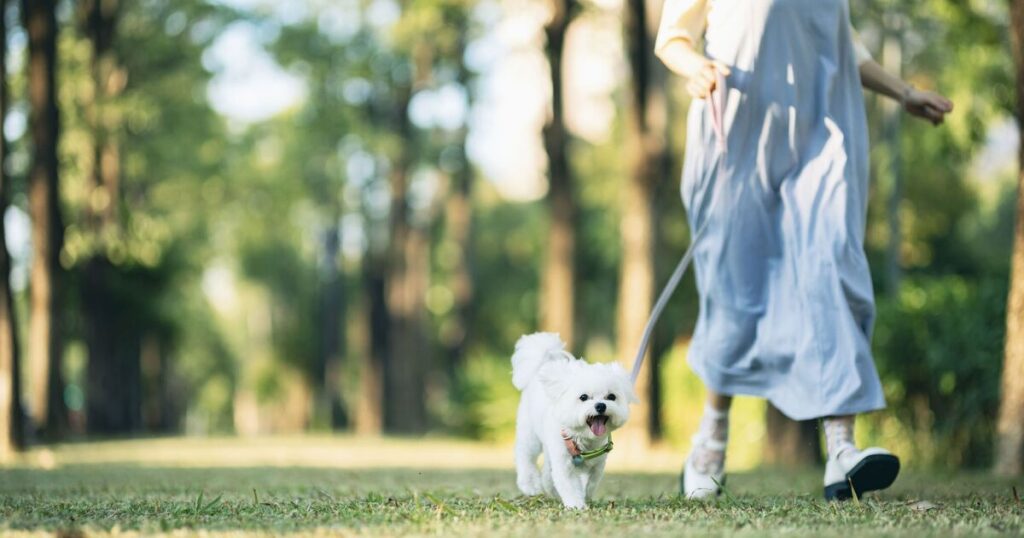
It’s important for dog owners to train their pets so they understand commands, know how to communicate and stay safe but it’s even more crucial for puppies as they are less developed than adult dogs.
Puppies are in a critical period of development where they learn quickly and form both good and bad habits. Early socialisation is also important for pooches of this age as PetMD explains that providing puppies with the right socialisation and basic puppy training helps them develop into well-adjusted and confident adult dogs.
Adult dogs can be trained as well but it’s usually harder to change established behaviours and address existing problems compared to preventing them in puppies. Lead training is a priority for many puppy owners as it allows them to go for walks outside with their pet, giving them the freedom to explore.
This involves teaching a puppy to walk calmly on a lead, without pulling, and to respond to commands while being led. Des is a professional dog trainer who has a puppy labrador named Popcorn and she posts dog training tips and information on TikTok.
In one of her clips she shared her strategy to make her puppy stop pulling on the lead. Each time Popcorn pulls, she stops walking and says ‘nope’, explaining that the aim is to get the puppy to allow slack in the lead.
The dog expert then silently waits for a check-in, such as eye contact, and when the puppy does this she says “yes” and carries on walking. Des elaborates that this teaches the puppy that if he pulls the lead, the walk will stop but if he allows slack and shows focus the walk will continue.
However, she cautioned: “It will take a lot of repetition. Stay patient and consistent.” The dog trainer added: “Once that habit forms, you can start building on it with heel work, turns and leash cues.”
Des gave more information in the caption of her post where she described dogs as “associative learners” so they “connect actions with outcomes.” She continued: “When a dog pulls and the walk keeps going, pulling is rewarded.
“But when the walk stops, that feedback loop breaks. By waiting for a ‘check-in’ (eye contact, turning back), you’re teaching your dog that leash slack and engaging with you = forward motion.”
Des claimed that her method teaches puppies that pulling means they won’t get a reward but they will be rewarded for checking in, which could be in the form of movement, praise or treats, and giving their attention is the “most important part of the walk.”
Dog owners took to the comments section to have their say on this training strategy. One shared: “Excellent training. This is exactly how I trained Sparky.
“We waited for a check in and looking back, now he has a beautiful heel and checks in all the time. [It] took patience and time.”
Another exclaimed: “Yes!!!! This is perfect!! I’m learning I have to be incredibly stubborn to out-stubborn our lab.”
A different puppy parent, who hasn’t had success with this technique, commented: “My pup is good with stopping and checking in but as soon [as] we resume [she] jets off and pulls so hard. I can’t get her to go slow.
Taking in a puppy is a lifelong commitment so it’s important to do your own research and understand its needs.
 Latest World Breaking News Online News Portal
Latest World Breaking News Online News Portal






